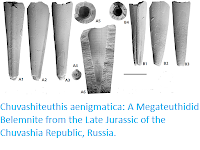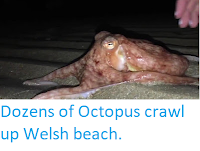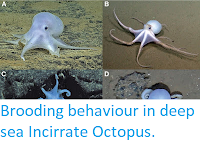The End Permian Extinction is the most severe extinction event known in the fossil record, with something like 96% of all species found before the event dying out without any decedents. The cause of this event has long been mysterious, though it is now generally thought to be associated with environmental degradation caused by the eruption of flood basalts in the Siberian Traps Igneous Province. However some researchers in the field have suggested that the model of a sudden extinction at the End of the Permian is itself incorrect, and caused by over-reliance on sections which average fossils from too long a time interval to estimate diversity before the extinction event, leading to an overestimation of that diversity, and therefore the scale of the final extinction, arguing that there was a long term decline in biodiversity running up to the End of the Permian.
In a paper published in the journal Geology on 24 January 2018, Wolfgang Kiessling of the GeoZentrum Nordbayern at the Universität Erlangen−Nürnberg, Martin Schobben of the Museum für Naturkunde at the Leibniz Institute for Evolution and Biodiversity Science, and the School of Earth and Environment at the University of Leeds, Abbas Ghaderi of the Department of Geology at the Ferdowsi University of Mashhad, Vachik Hairapetian of the Department of Geology at the Isfahan (Khorasgan) Branch of the Islamic Azad University, and Lucyna Leda and Dieter Korn, also of the Museum für Naturkunde at the Leibniz Institute for Evolution and Biodiversity Science, examine the diversity of fossil Ammanoids in two deepwater limestone sections from the ancient Tethys Ocean, which today outcrop at Julfa in East Azerbaijan Province in northwest Iran and Baghuk Mountain in Isfahan Province in central Iran.
Ammanoids are an extinct group of Cephalopod Molluscs which appeared during the Devonian and had external shells superficially similar to the living Nautiloids, though they are in fact more closely related to Coleoids (Octopus, Squid and Cuttlefish). The most noted group of Ammanoids were the often large and conspicuous Ammonites, which survived until the End Cretaceous extinction, but there were a number of other groups, several of which died out in the End Permian Extinction. Ammanoid species are typically fairly easy to tell apart by their shell ornamentation, and the group was prone to high rates of species turnover, making them useful to biostratigraphers (scientists that use fossils to date rocks).
Paratirolites
kittli, an Ammanoid from the Late Permian of Iran. Leonova (2016).
Kiessling et al. examined the top 4 m of the limestone at both locations, which is thought to represent a time of steady deposition lasting about 700 000 years (earlier portions of the deposits are thought to have had less even sedimentation rates, and were therefore excluded from the study. They found that rather than a single extinction event at the end of the period, a number of separate pulses of extinction were recorded, suggesting a long term break-down in environmental conditions leading up to the End of the Permian, rather than a single extinction-triggering event at the end of the period. This was further supported by the nature of the Ammanoids closest to the End of the Permian, which were both smaller than earlier specimens, and had simpler ornamentation, resembling juveniles of the earlier species, something which is also likely to be a sign of environmental stress.
See also...
See also...
Follow Sciency Thoughts on Facebook.







